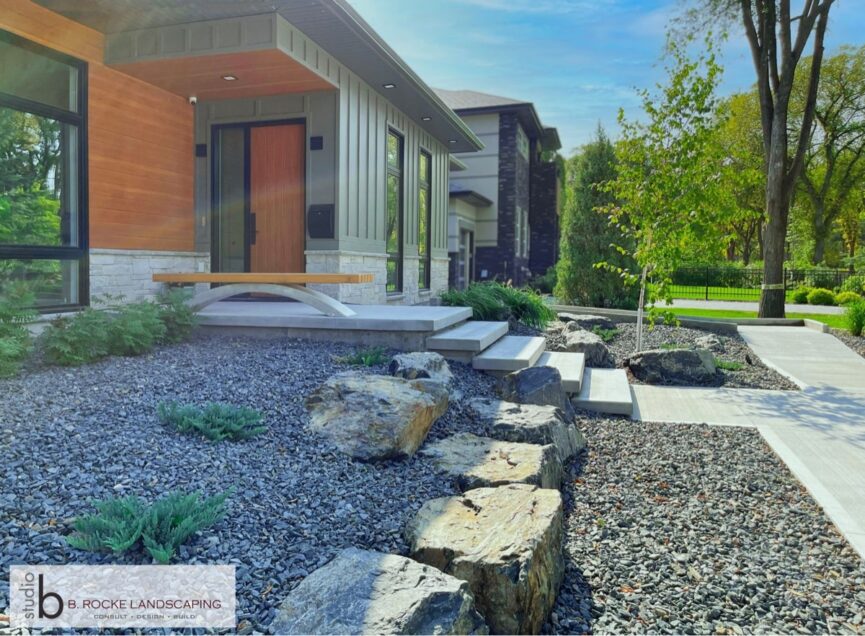Grading in landscaping plays a crucial role in creating a beautiful and functional outdoor space. However, it’s not uncommon to encounter grading challenges that can impact the overall success of your landscaping project. Whether you’re dealing with poor drainage, uneven surfaces, or erosion problems, this post offers simple solutions to help you tackle common grading issues and achieve a well-balanced and visually appealing landscape.
Assess the drainage:
Poor drainage is one of the most common grading issues in landscaping. Excessive water accumulation can lead to waterlogging, plant damage, and even structural issues. Begin by evaluating the current drainage patterns of your landscape. Identify low spots where water tends to pool and high spots where water runs off quickly. To resolve drainage problems, consider re-grading the area to create gentle slopes that direct water away from buildings and plantings. Installing French drains, swales, or dry creek beds can also help redirect and manage water flow effectively.
Address erosion problems:
Erosion can be a significant challenge, especially on slopes or areas with loose soil. If you notice signs of erosion, such as exposed roots, bare soil patches, or sediment accumulation in unwanted areas, take immediate action. Stabilize slopes by adding erosion control measures like retaining walls, terracing, or installing erosion control fabrics and matting. Planting vegetation, such as grasses or ground covers, can also help anchor the soil and prevent erosion.
Level uneven surfaces:
Uneven surfaces not only detract from the aesthetic appeal of your landscape but can also pose safety hazards. To level uneven areas, start by removing excess soil from high spots and redistributing it to low spots. Use a rake or shovel to create a smooth, even surface. For more significant grading adjustments, you may need to bring in additional soil or employ machinery such as a bobcat or a tractor to achieve the desired results.
Employ proper compaction techniques:
Compaction is essential for ensuring the stability of the graded areas. Proper compaction prevents settling and helps maintain a level surface over time. Use a vibrating plate compactor or a roller to compact the soil, working in thin layers to achieve the desired density. Pay close attention to areas where foot traffic or heavy equipment will be present, such as pathways, driveways, or patios.
Grading issues in landscaping can impact the aesthetics, functionality, and longevity of your outdoor space. By understanding the purpose of grading, assessing drainage and erosion problems, leveling uneven surfaces, employing proper compaction techniques, and seeking professional guidance when needed, you can overcome common grading challenges and create a well-balanced, visually pleasing landscape. With careful planning and implementation, your landscaping project will flourish, providing years of enjoyment and beauty. Contact us at (204)-615-2512 for help with your next landscaping project!

